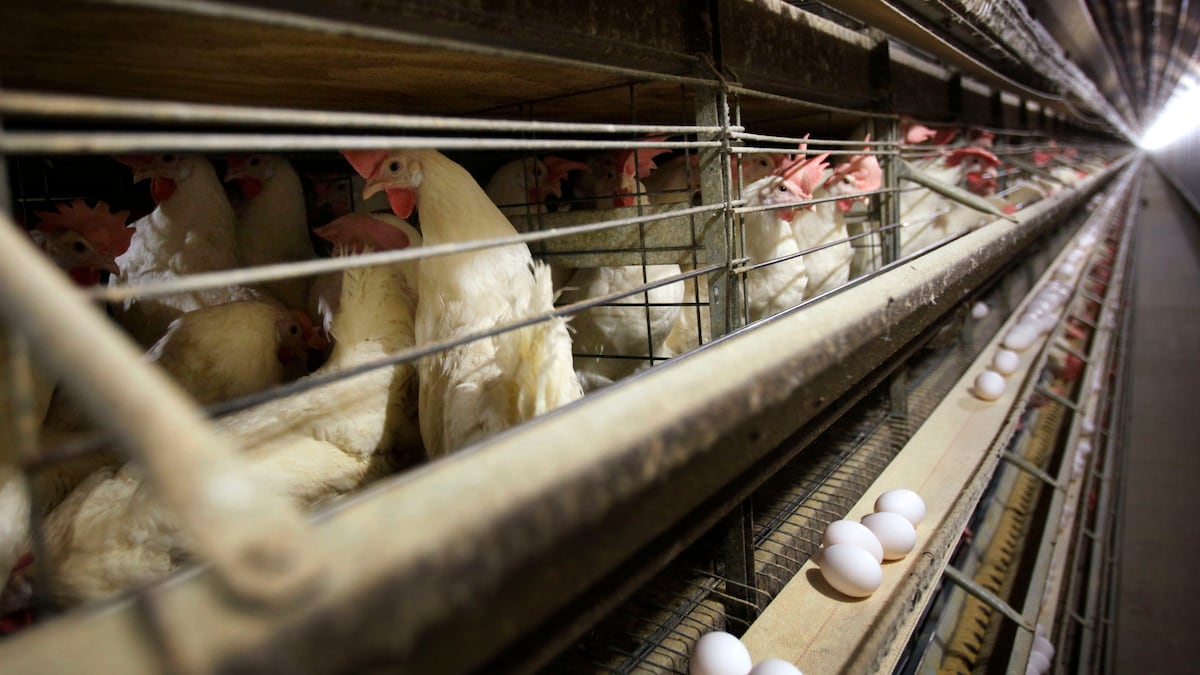Fitness
What we know about the bird flu strain that has caused a fatality in Mexico

Avian influenza, in its various strains, has long been on the radar of health authorities: a mutation that facilitates the jump to humans and its transmission between people could have serious consequences. On Wednesday, the WHO reported the world’s first known fatality from the A(H5N2) variant. The case was recorded in April in Mexico. Other types of avian influenza, or bird flu, have already caused human deaths in other parts of the world. This is what is known about the virus, its variants, and its dangers:
What is bird flu?
Avian influenza is a disease caused by viruses of the same family as those that cause human influenza. There are four types: A, B, C and D. The one that spreads among birds is the A type. Within it, there are subtypes, five of which have been shown to be capable of jumping to humans: H5, H6, H7, H9 and H10. The one that has been under the spotlight for some years is H5N1, which has frequently jumped to mammals and, for more than a year (as far as we are aware) has been transmitting among them. H5N2, which caused the fatality in Mexico, had not been detected in humans before.
Can it be transmitted between humans?
With H5N1, cases of the virus jumping to humans are not frequent, but neither are they extraordinary. Since its discovery in 2003, some 900 instances have been documented, with case fatality rates of around 50%. What has not been proven so far is any person-to-person transmission. With respect to H5N2, until the Mexico patient, no human cases had been verified in the laboratory, so there is no known contagion from one person to another.
How did the first person who died from this variant become infected?
That remains a mystery. The patient was a 59-year-old man who had no contact with birds, which is the route of transmission for avian influenza to humans. He was already in hospital suffering from several underlying conditions and had been bedridden for three weeks with fever, respiratory distress, diarrhea, nausea, and general malaise. “The role of this virus in the fatal outcome cannot be assumed to be directly responsible without further investigation. The prompt follow up in healthcare professionals and family members in contact with the infected patient provides reassurance at present this is an isolated case,” Ian Brown, head of the Avian Virology group at the Pirbright Institute, told the Science Media Center (SMC). Ed Hutchinson, senior lecturer at the MRC-University of Glasgow Virus Research Centre, believes it is most likely a “spillover” infection, where a virus adapted to one host species manages to infect a member of another species (in this case a human), but is not able to transmit further.
Could it spread between humans?
In its statement, the WHO said that avian influenza has the “potential for high public health impact,” although it considers H5N2 to represent a “low” risk to the population. “Available epidemiological and virological evidence suggests that A(H5) viruses from previous events have not acquired the ability to sustain transmission between humans, thus the current likelihood of sustained human-to-human spread is low,” the agency reports.
In the opinion of Ian Jones, professor of virology at the University of Reading (UK), it is “impossible to generalise” based on a single case. “However, as H5N2 is present in Mexico and the infected individual had underlying medical conditions, which may have contributed to the outcome, it would be reasonable to suppose this is a one-off case of zoonotic transfer with no potential to spread. This would be consistent with previous examples of occasional avian influenza infections in people. Unless or until there is evidence of strain adaptation or sustained transmission, the risk to the population is very low. The case should act to reinforce the importance of monitoring and eradicating outbreaks in poultry as soon as they occur,” he told SMC.
Where did H5N2 come from?
Although it is not known how the victim was infected, there have been recent outbreaks of the H5N2 influenza virus in poultry in Mexico.
How is it different from H5N1?
They are two subtypes of avian flu, but H5N1 is much more widespread around the world. Recently, it has been spreading between cattle on dairy farms in the U.S., but it is unclear how it is transmitted between them. Although it is not perceived as an imminent threat to humans, it is of much greater concern than H5N2, for several reasons: since 2021 it has proliferated more among non-waterfowl, such as scavengers. This has resulted in more contact with mammals, which provide food for these species. And, for the first time, contacts between mammals were detected last year, which have been expanding to more species and specimens. It is extremely complex for the mutation to become contagious between humans, but not impossible, so the international health authorities are remaining vigilant as they work to get to the bottom of the H5N2 fatality case.
Sign up for our weekly newsletter to get more English-language news coverage from EL PAÍS USA Edition


)






